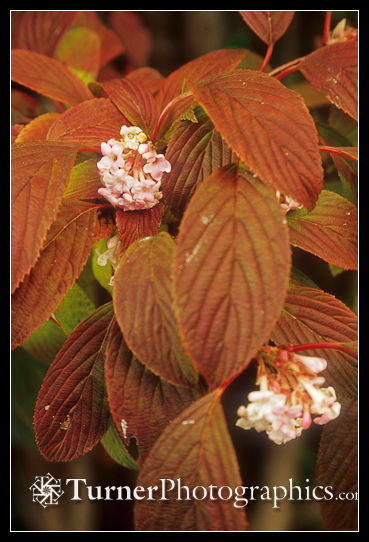Plant of the Month: Scouler’s Willow
![1302085 Scouler's Willows in fall color among Snowbrush w/ Ponderosa Pines on skyline [Salix scouleriana; Ceanothus velutinus]. Okanogan-Wenatchee NF Shady Pass Road, Chelan, WA. © Mark Turner Scouler's Willows in fall color](/wp-content/uploads/2014/11/Turner_1302085.jpg)
I spent a lot of time with our native willows while photographing for Trees & Shrubs of the Pacific Northwest, but never really thought about them as a spectacular part of our fall color palette. Maybe that’s because I was looking for them in flower and with fresh summer green leaves.
That changed when I drove across a Forest Service road on the Okanogan-Wenatchee National Forest west of Lake Chelan, Washington last fall on the recommendation of a fellow nature photographer. Road 5090, the Shady Pass Road, connects Lake Chelan with the Entiat valley. It climbs to around 6,000 feet and we weren’t able to make it all the way across the pass because we ran into some early season snow compacted into ice on the road. Continue reading


![0314703 Deer Ferns in moss garden w/ Salal on decaying stumps bkgnd [Blechnum spicant; Gaultheria shallon]. Bloedel Reserve, Bainbridge Is., WA. © Mark Turner 0314703 Deer Ferns in moss garden w/ Salal on decaying stumps bkgnd [Blechnum spicant; Gaultheria shallon]. Bloedel Reserve, Bainbridge Is., WA. © Mark Turner](/wp-content/uploads/2013/12/DeerFern_Turner_0314703.jpg)
![1202683 Pacific Dogwood [Cornus nuttallii]. CA Rt 32, Forest Ranch, CA. © Mark Turner Pacific Dogwood](/wp-content/uploads/2013/05/Turner_1202683.jpg)
![1300232 Beaver pond wetland framed by Douglas-firs, Western Redcedars, Red Huckleberries [Pseudotsuga menziesii; Thuja plicata; Vaccinium parvifolium]. Stimpson Family Nature Reserve, Bellingham, WA. © Mark Turner Beaver pond wetland](/wp-content/uploads/2013/04/Turner_1300232-blend.jpg)

![0802087 Pink Fawn Lily blossoms [Erythronium revolutum]. Hi-Knoll Park, Surrey, BC. © Mark Turner Pink Fawn Lily blossoms](/wp-content/uploads/2013/04/Turner_0802087.jpg)

